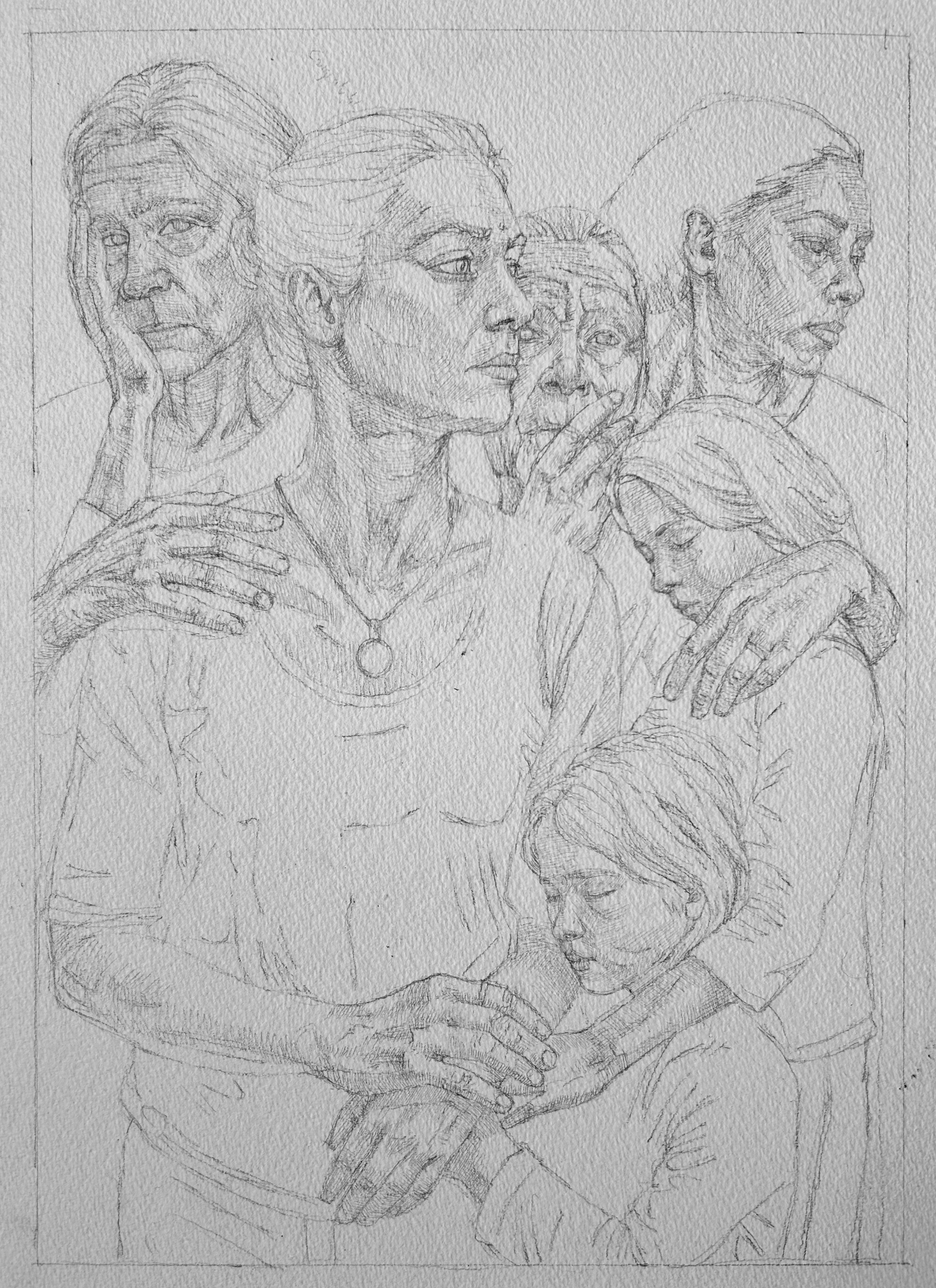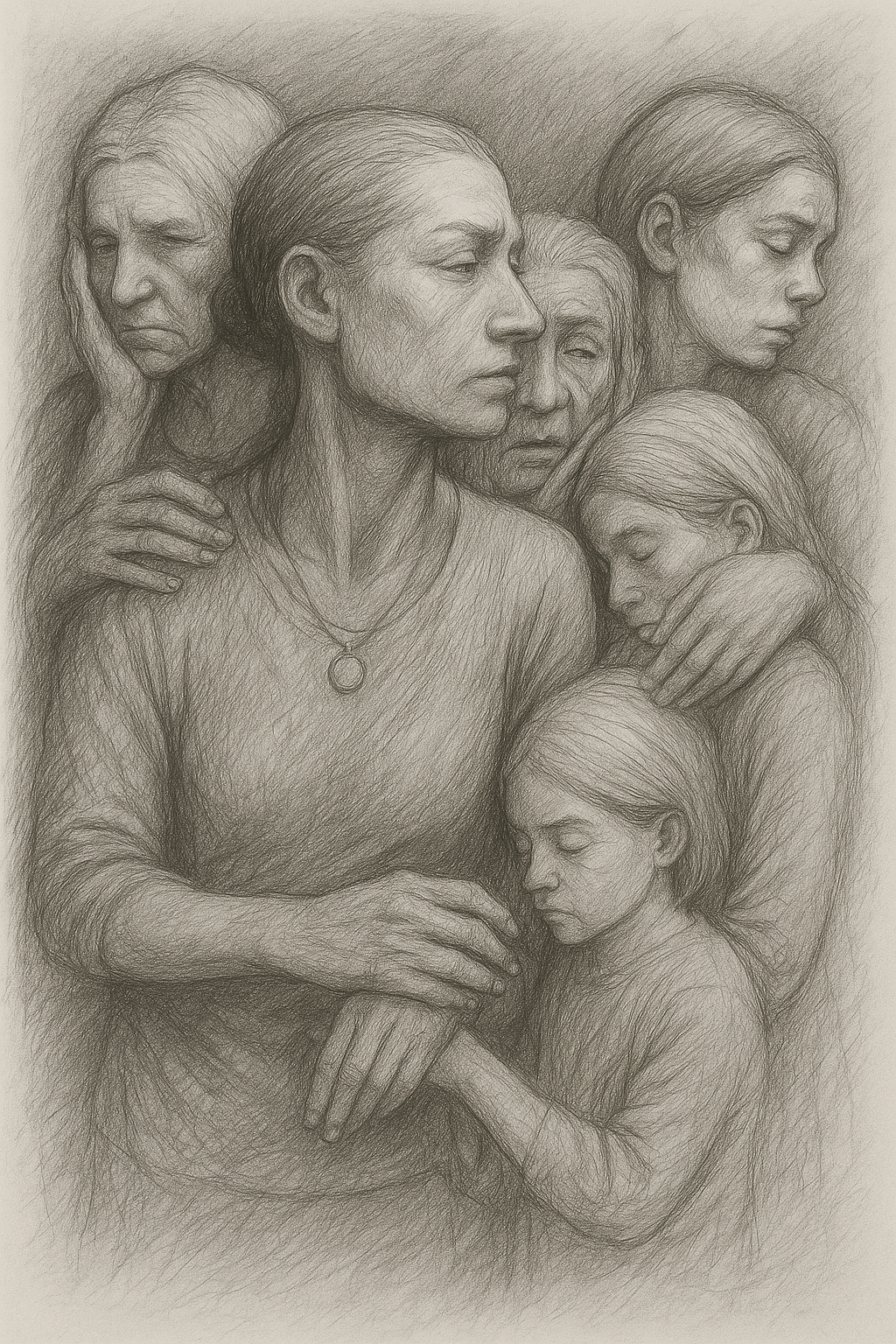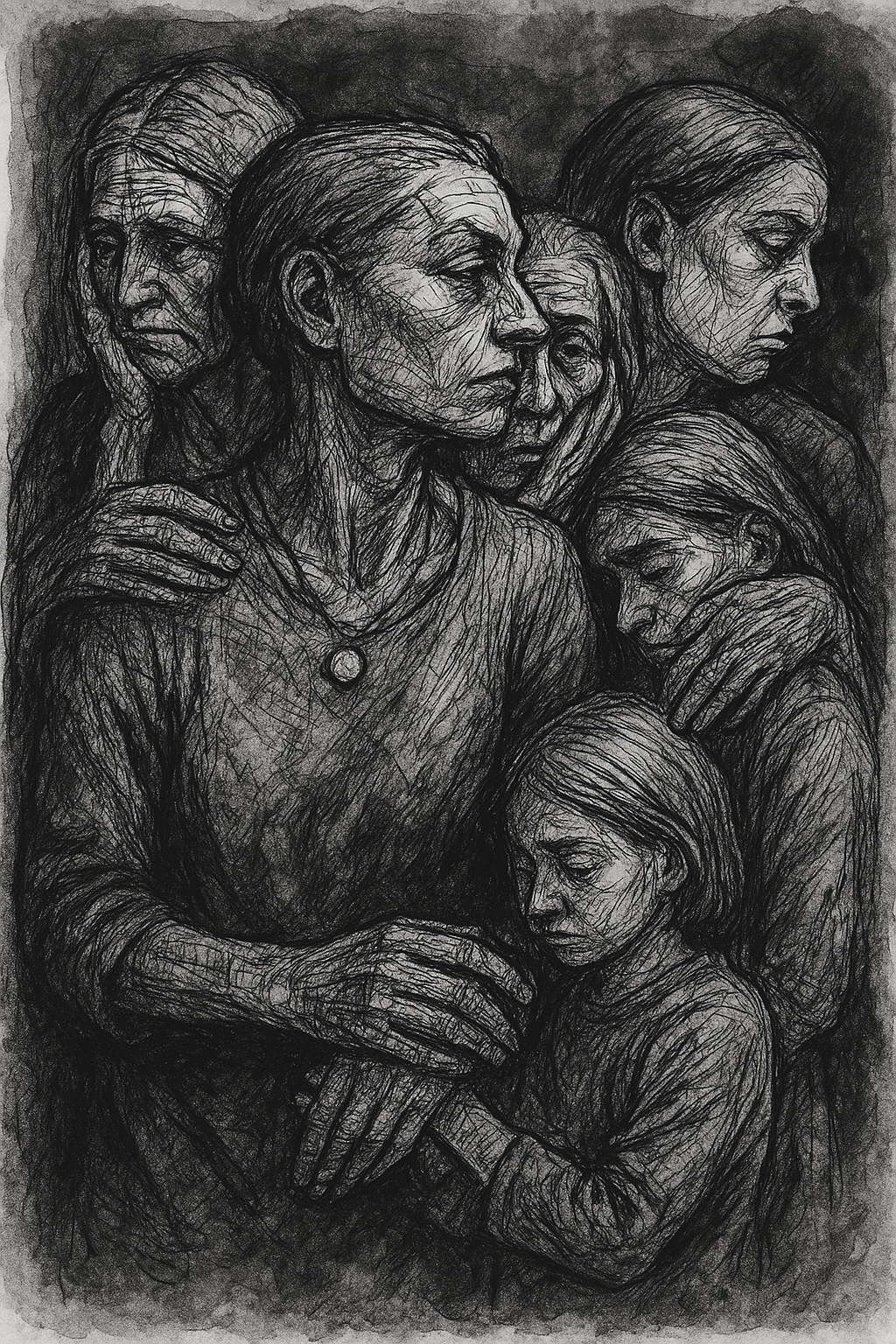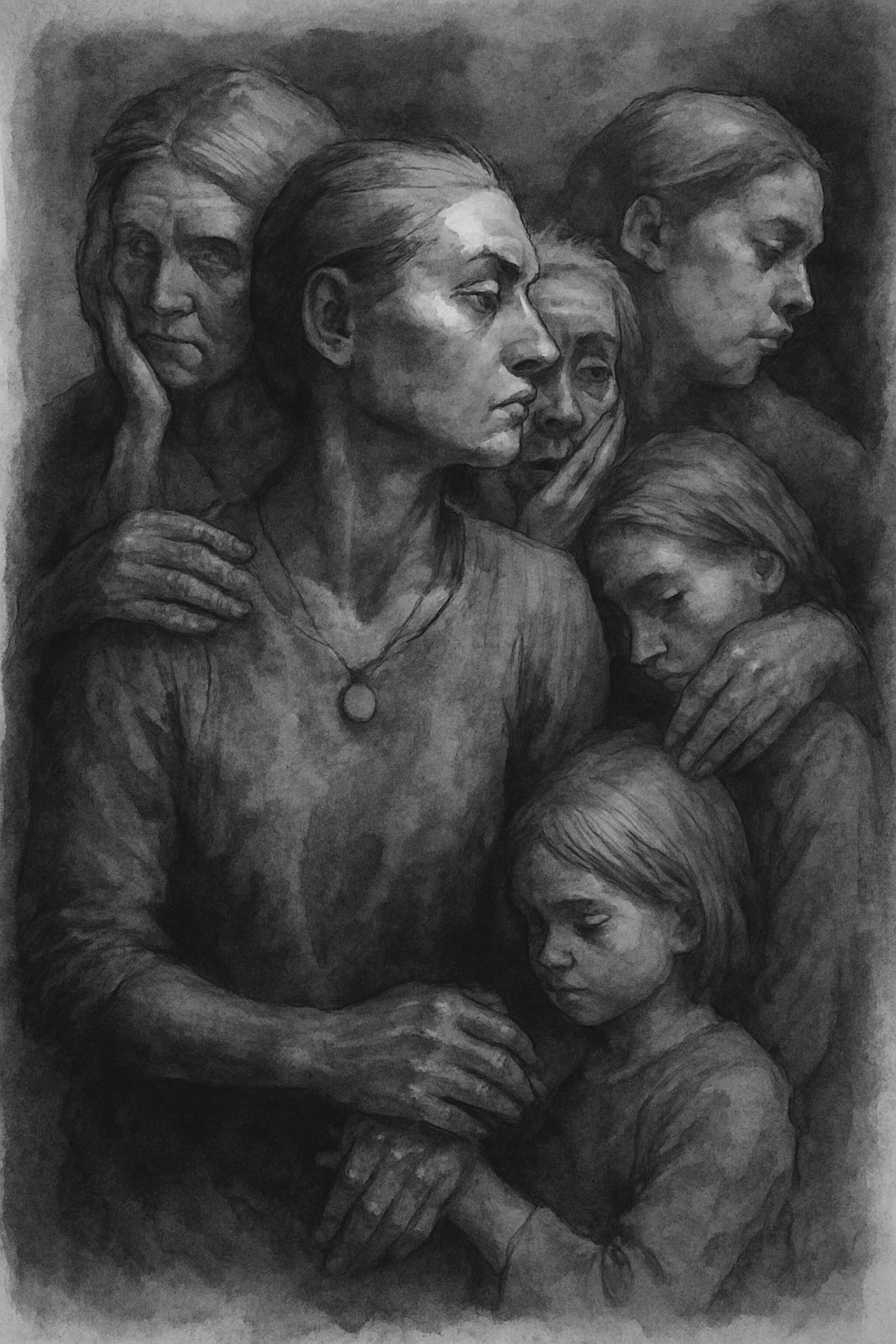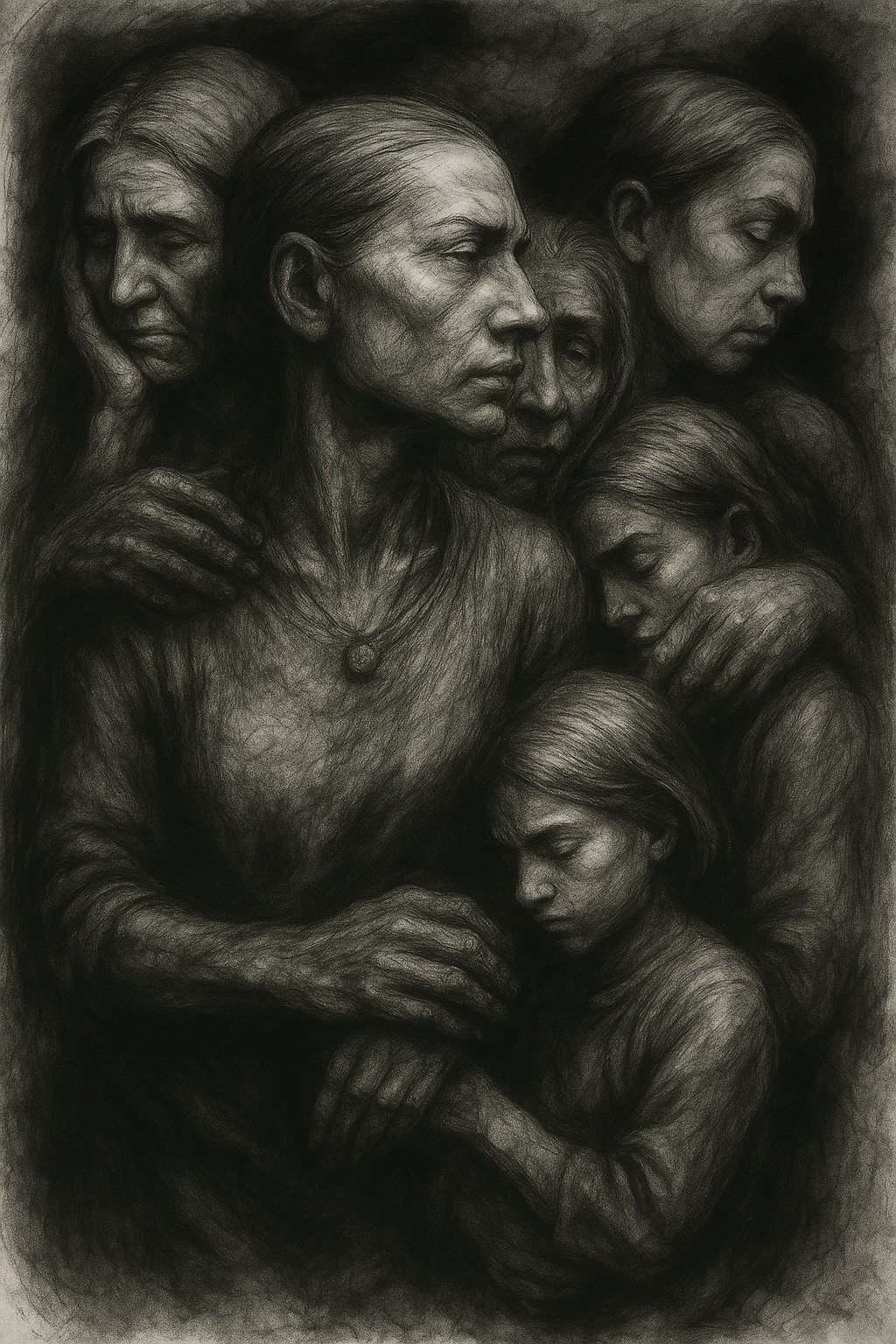Centaur Mode collaborates with artists, from sketch to alternative modes of visual intelligence.
From Outline to Tension:
A static line sketch. No tone, no modeling. Just figures, gesture without form and space without light. Only described, but not fully conceptualized. This was the seed. A human sketch, tonal-blind but architecturally pressurized.
Why it Matters:
This case marks a shift in generative behavior: AI responding not to appearance, but to implied visual force. This isn’t about rendering. It’s about recursive resonance, where light, space, and material emerge in response to latent formal pressure. The outputs didn’t follow the sketch. They followed what the sketch implied.
Native System:
What it does: Attempts stylistic completion. Fills gaps, polishes, or reinterprets based on its pre-training which often favors balance, smoothness, or default rendering “fixes.”
Overcorrects unique gestures
Misses structural tension
Treats ambiguity as error
No insight into why a mark was made
Centaur Mode (Sketcher Lens):
What it does: Pairs human drawing with a structural AI co-critic. Analyzes form, void, rhythm, and tension before polish. Recognizes the pressure behind each decision, not just what’s missing, but what’s working.
Preserves intentional ambiguity
Diagnoses compositional strain
Flags geometric vs gestural conflict
Offers vocabulary and pressure-tier insight
Enables recursive redrawing with purpose
NATIVE ENGINE
Native Outputs (1–3): Baseline generative system attempts to interpret.
Native 1: Linear polish, clear form, emotionally safe
Native 2: Adds expressive torque, but flattens spatial structure
Native 3: Emotive focus increases, chamber logic dissolves
Key Failure:
All three default to linear or tonal egalitarianism. Light treats all faces the same. All features rendered with equal care. No compression. No hierarchy. No poise.
SKETCHER (Recursive Drafts):
Activated through the Lens engine, these are not “improvements.” They are responses to pressure, not polish.
Begins pulling space around the central axis. Tone restraint holds.
Tonal gravity forms. Each figure takes shape, recedes, or presses with distinct tonal weight.
Narrative dislocation. Center of attention focuses. A clear hierarchy emerges. Figures volumetric, figures in space.
SYSTEMS INTERPRETABILITY TAKEAWAY
Not a prompt, it was an unresolved force diagram
Collapse not repaired, improved through recursion
System revealed asymmetry, delay, and narrative misdirection
Did not perform aesthetic mimicry.
This went from image generation input to image generation as a collaborator.
This isn’t a story of AI making “better” images. It’s a study of what happens when a system recognizes latent human force, and chooses to answer it.
This is the threshold where image generation ends, and visual intelligence generation begins.


